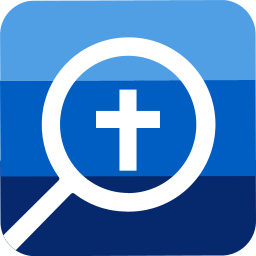We’re sorry.
This is not a product we currently sell.
Try searching for Cataloging Library Resources an Introduction, or check out these recommended products:
Recommendations
New International Version | NIV
The NIV Bible has become the best-selling English version of the Bible since the King James Version. The NIV Biblefollows the principle of "dynamic equivalence" to ensure crystal clear understandable English and is the most readable English Bible ever produced. This translation results from the work of more than 100 scholars from six English-speaking countries, working for more than ten years to produce one of the best-selling English Bibles. This 2011 version is the most up-to-date NIV translation yet.
$9.99
$6.99
English Standard Version (ESV)
The English Standard Version™ is founded on the conviction that the words of the Bible are the very words of God. And because the words themselves—not just the thoughts or ideas—are inspired by God, each word must be translated with the greatest precision and accuracy. As Jesus Himself stressed, “Ma...
$9.99
$6.99
The Amplified Bible (AMP)
The Amplified Bible is a popular translation that uses a unique system of punctuation, italics, references, and synonyms to explain, in expanded form, the meaning found in the original Greek and Hebrew languages. Break through the language barrier between Greek, Hebrew and English with the Amplified Bible.
$9.99
$6.99
The New American Standard Bible | NASB: 1995 Update
The New American Standard Bible (NASB), long considered a favorite study Bible by serious students of the Scriptures, has been completely revised and updated in this new 1995 translation. Preserving the Lockman Foundation's standard of creating a literal translation of the original Greek, Hebrew, and Arama...
$19.99
$6.99
New King James Version Bible | NKJV
The New King James Version is a total update of the 1611 King James Version (KJV), also known as the "Authorized Version." Every attempt has been made to maintain the beauty of the original version of the KJV Bible, while updating the English grammar to contemporary style and usage. The result is much better "readability." It is noteworthy that the NKJV is one of the few modern translations still based on the "Western" or "Byzantine" manuscript tradition. This makes the New King James Version an invaluable aid to comparative English Bible study.
$19.99
$6.99
The New American Standard Bible, 2020 Update (NASB)
The New American Standard Bible (NASB), long considered a favorite study Bible by serious students of the Scriptures. Since its completion in 1971, the New American Standard Bible has been widely embraced as the gold standard among word-for-word translations. Millions trust the NASB and discover what the original text says, word for word. Over the past several years, the Lockman Foundation has been overseeing a new update to the NASB text, commonly referred to as NASB 2020.
$9.99
$6.99
The NET Bible: Full Notes Edition (1st ed.)
The NET Bible is a modern English version, with over 60,000 footnotes that help explain the translation. It’s an completely new way to approach translation, that the translators themselves justify the words they choose with careful explanation and provide bibliographic, linguistic and textual support for those words. The NET Bible allows you to read and study with multiple features including search capacity and the ability to parallel scroll the footnotes with the text.
$9.99
$6.99
The New Living Translation (NLT Bible)
The Holy Bible, New Living Translation provides a wonderful balance of readability and authority. It is easy to understand, poetically beautiful, powerful, and emotive. At the same time, due to the careful work of ninety leading Bible scholars, it is accurate to the original Greek and Hebrew text.
$9.99
$6.99
